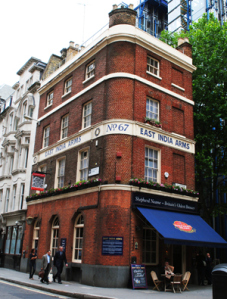Contents
- Introduction
- Preface
- Overview
- Relief Valve
- LECTURE 1: Why We Are In The Dark About Money
- LECTURE 2: The Con
- LECTURE 3: The Vatican-Central to the Origins of Money & Power
-
LECTURE 4: London The Corporation Origins of Opium Drug Smuggling
- Early Barter System
- Trade started with a Sail Boat called a Carrack
- Corporations and Maritime Time Line
- Marine Merchants Timeline
- Levant Company
- London The Corporation
- Church of England The Corporation
- Just Steal It - EIC Commits First Corporate Espionage!
- Matheson & Jardine Families
- The Bankster Families Who Control Opium Smuggling
- Imperialism Rules Enlightened Despotism
- Dutch East India Company
- The Honorable East India Company
- Hong Kong Shanghaied
- Chatham House
- Thuggee the First Fraternity
- Bank of England
- Pirate Bankers
- EIA First Contact With Shanghai China
- The Collapse of the Royal African Company: How Open Trade Trumped the Monopoly
- Shanghai and the First Contact with the West
- Opium - TimeLine
- Opium Trade
- The Opium Wars
- Letter to Opium Drug Smuggling Queen Victoria
- Lecture 4 Objectives and Discussion Questions
- LECTURE 5: U.S. Pirates, Boston Brahmins Opium Drug Smugglers
- LECTURE 6: The Shady Origins Of The Federal Reserve
- LECTURE 7: How The Rich Protect Their Money
- LECTURE 8: How To Protect Your Money From The 1% Predators
- LECTURE 9: Final Thoughts
WE ARE STILL SLAVES OF THE CORPORATION OF THE CITY OF LONDON
The Corporation of the City of London
Founders' Hall, 1531 - 1845, rebuilt after the Great Fire 1666.
Founders' Hall 1 Cloth Fair, London, London Area: The City

The Law of Banking is known as International Maritime Admiralty Law.
This Maritime Law was based on VATICAN CANON LAW
THE OPIUM / SLAVE TRADE Marine Merchants Timeline:
24 September, 1599: London. About eighty English merchants meet to discuss the formation of an English East India Company. Including, Richard Staper(Levant Co), Thomas Smythe (Levant Co), Sir John Hart, Richard Cockayne, Lord Mayor Sir Stephen Soane
 Henry Soane Born: Sussex 1622 Died: abt. 1661 Virg. the great-great grandfather of Thomas Jefferson.
Henry Soane Born: Sussex 1622 Died: abt. 1661 Virg. the great-great grandfather of Thomas Jefferson.
The EIC stands apart as the world's first major shareholder company, which ruled a fifth of the world's population, with a quarter million private army and generated revenues much greater than the whole of Britain. It played a key role in the triggering of globalization, long before it became a buzzword. By 1707, the EIC became Britain's single most successful enterprise and the biggest single employer in London.
Under the Chairmanship of the Lord Mayor, Sir Stephen Soane, agreed to petition Elizabeth I, to set up a company to trade with the East Indies. After a series of political negotiations and finance raising, finally the EIC was incorporated on December 31, 1600. Queen Elizabeth granted a charter to the Governor and Company of Merchants of London for fifteen years with the primary purpose of share in the East Indian spice trade lured by India's profitable economic market.
In 1609, the company got a permanent charter, which continued former privileges and added authority to make peace or war with Indian princes. By 1615, the merchants combined as a single joint stock company, and planted the seeds for the beginning of a modern idea of shareholdings and dividends. Then, political control came gradually as residential governors began to establish the foundations of English justice, fixed land revenue in India. By the late 17th century, it was a well-organized monopoly company. In the process, it emerged as the most powerful private company in history. In 1813; the government abolished its monopoly of trade. In 1833, it was deprived of its rights to trade altogether. The company's army was passed to the crown, and with the expiry of the charter on June 1, 1874, the unusual East India Company met its closing stages.
East India Arms

Built in 1829 on a site which has apparently hosted a pub since 1630, this red brick pub in Fenchurch Street in the City is named for the East India Company. The company headquarters was located in East India House in nearby Leadenhall Street (the rather grand building was demolished in 1861 and the site is now occupied by the architecturally adventurous Lloyd’s Building). The small, one-roomed pub, at 67 Fenchurch Street, is now part of the Shepherd Neame chain.
 The East India Company (EIC)
The East India Company (EIC)